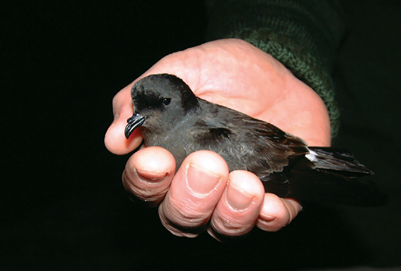What’s the weirdest way you’ve ever illuminated a dark evening? Torch on your head? Stick of fire? If a candle made of a storm petrel chick isn’t on your list, you’ve barely dipped your toe into the world of weird ways of getting around.
The grim, rare, but real practice, is the subject of a new study that wanted to check the legitimacy of historic accounts of storm petrel chicks being used as candles. The unlucky species in question were Leach’s Storm-petrels Hydrobates leucorhous and European Storm-petrels H. pelagicus.
Why on Earth would a chick make a good candle, we hear you ask? The working theory is that the high fat or oil content of these animals meant they’d burn well to light up gloomy nights in remote areas.
Storm petrel chicks being used as candles has been reported in Ireland, Scotland, and the Faroe Islands, but was it really as widespread as accounts indicated? The team looked at historical, ethnographical, and museum evidence to investigate.
The earliest account of the grim candles they could find was Morten Thrane Brünnich’s book, Ornithologia borealis, which was published in 1764. “The wick is nourished by the abundance of the body, whatever is ignited, and takes the place of the candle in the Faroe Islands,” he wrote.

European Storm-petrel Hydrobates pelagicus captured for bird ringing, Algarve, June 2002.
Image credit: © Rob Thomas
His words carried far and wide in early ornithological works, which the team suspects may have fuelled the rumors that lighting up storm petrel chicks was a widespread practice. However, this recent investigation concluded that most of the accounts were second-hand, and there was only a handful of examples that could be verified either in the form of photographs, first-person accounts, or physical museum specimens.
The team did encounter a European Storm-petrel with a wick threaded through the length of the specimen in the collections of the Pitt Rivers Museum in Oxford. Thought to have originated from St Kilda or Shetland, it came to the museum as part of a collection from folklorist Edward Lovett that was acquired in 1892.
Storm petrel chicks as candles was a real practice, but evidence suggests that it was unlikely to be a common and widespread one, and the assertion that it was is probably fuelled reproductions and exaggerated accounts rather than authentic, firsthand, storm petrel chick fat.
“There is clearly some evidence of the use of storm-petrel chicks as candles based on the existence of physical specimens and at least one historic account from Ireland,” said study author Dr Alex Bond in a statement seen by IFLScience. “However, the number of first-hand accounts of examples in museum collections is much lower than might be expected given the ubiquity of the assertion.”
“Having access to historical specimens and an abundance of literature enabled us to delve deeper into the curious claims we had seen crop up time and time again in North Atlantic seabird records. The natural world is often key to unlocking many secrets about how we lived throughout history and, specifically, the stark differences in the ways in which we engage with our ecosystems then and now.”
The study is published in the journal Seabird.
Source Link: Candles Made Of Chicks Was A Rare But Real Practice In The North Atlantic